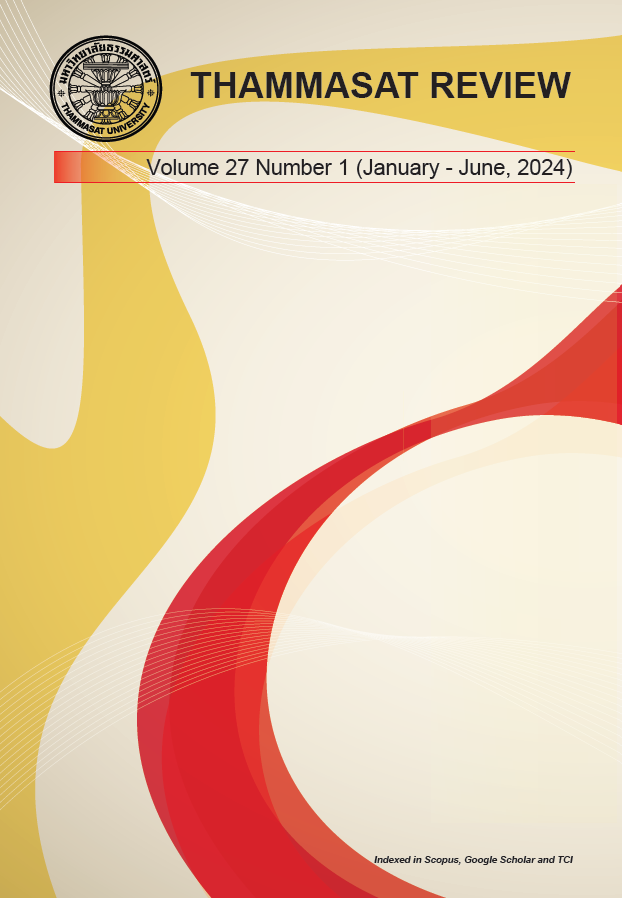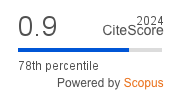Sacred Mountains in Thailand and Japan: A Comparative Study of Mt. Doi Suthep and Mt. Yoshino-Omine
Keywords:
Syncretism, Buddhism, Living Heritage, Sacred Mountains, ConservationAbstract
This article investigates the historical development of ritual practices at two revered mountains, Doi Suthep-Pui in Thailand and Yoshino-Omine in Japan. Situated along the Thongchai Mountain range, Doi Suthep-Pui has been a sacred site since the pre-Buddhist era, intricately woven into the cultural identity of Chiang Mai and the history of the Lan Na Kingdom. The region embodies a syncretic landscape where indigenous beliefs converge with Theravada Buddhism. Meanwhile, Yoshino-Omine, at the heart of Japan's earliest Buddhist civilization, integrates Shugendo Buddhism with Shinto beliefs. Drawing on fieldwork and secondary literature, this article compares the legends, myths, beliefs, and rituals associated with these sacred mountains. It also scrutinizes the impacts of state interventions in religious traditions, particularly in the context of modernization and national religious reforms, examining the divergent trajectories of Thailand and Japan in the post-World War II period. Engaging with theoretical debates about religious syncretism, the aim is to provide insights into how these interventions have differentially shaped the syncretic ritual practices of Doi Suthep-Pui and Yoshino-Omine. By contextualizing Doi Suthep and Mount Yoshino-Omine within a broader historical and conceptual framework, this article aims to elucidate the dynamic interplay between religious traditions, state power, and local agency in shaping sacred geographies. With Doi Suthep and its pilgrimage route listed on the tentative list of UNESCO World Heritage since 2015, Chiang Mai’s heritage authorities can draw many lessons about managing the syncretic living heritage of the mountain from a study of Yoshino-Omine, which was inscribed as a UNESCO World Heritage Site in 2004. To properly acknowledge the syncretic cultural landscape of Chiang Mai, I argue that Thailand needs to decolonize its approach to heritage interpretation and management.
References
Adolphson, M. S. (2007). The teeth and claws of the Buddha: Monastic warriors and sōhei in Japanese history. University of Hawai’i Press.
Boyer, P. (2001). Religion explained: The evolutionary origins of religious thought (Nachdr.). Basic Books.
Breen, J., & Teeuwen, M. (Eds.). (2000). Shinto in history: Ways of the kami. University of Hawaiʻi Press.
Center for the Promotion of Art Culture and Creative Lanna Chiang Mai University. (2012). Lan Na Kham Mueang Chom Rom Khon Hak Mueang: Phi Suea (Lanna Local Word and Urban Fan Club: Guardian Spirits). Matichon Weekly, (2149) (29thOctober-4thNovember 2021).
Chaloemtiarana, T. (2007). Thailand: The politics of despotic paternalism (2nd printing). Silkworm Books.
Chotisukharat, S. (1971). Supernatural Beliefs and Practices in Chieng Mai. Journal of the Siam Society, 59(1), 211-231.
De Jong, F. (2022). Decolonizing Heritage: Time to R 'pair in Senegal. Cambridge: Cambridge University Press.
DeWitt, L. E. (2016). Envisioning and Observing Women’s Exclusion from Sacred Mountains in Japan. Journal of Asian Humanities at Kyushu University, 19-28.
Eckelmann, A. (2020). Connecting the Past and Present of Shugendo – The Revival of Japan’s Ancient Mountain Ascetic Tradition, Part One. https://www.buddhistdoor. net/features/connecting-the-past-and-present-of-shugendo-the-revival-of-japans-ancient-mountain-ascetic-tradition-part-one/
Keyes, C. (1975). Buddhist Pilgrimage Centers and the Twelve-Year Cycle: Northern Thai Moral Orders in Space and Time. History of Religions, 15(1), 71–89.
Khruathongkhiaw, N. (2012). Poet Phaen Yuet Lan Na (Reveal Plan for the Conquest of Lan Na). Matichon.
Klonos, G. (2019). The robe of leaves: A nineteenth-century text of shugendo apologetics. Japanese Journal of Religious Studies, 46(1). https://doi.org/10.18874/jjrs.46.1. 2019.103-128
Knudsen, B. T., Oldfield, J., Buettner, E., & Zabunyan, E. (2021). Decolonizing colonial heritage. Routledge eBooks. https://doi.org/10.4324/9781003100102
Kyoto Shunju (2015). Shogo-in Temple. https://kyotoshunju.com/temple-en/shogo-in-temple/
Leopold, A. M., Jensen, J. S., & Leopold, A. M. (Eds.). (2004). Syncretism in religion: A reader . Equinox.
McGuire, M. P. (2013). What’s at Stake in Designating Japan’s Sacred Mountains as UNESCO World Heritage Sites? Shugendo practices in the Kii peninsula. Japanese Journal of Religious Studies, 40(2). https://doi.org/10.18874/jjrs.40.2.2013.323-354.
Phramaha Pabhakaro, P., Phrakrusamu Ciradhammo, T., & Peuchthonglang, P. (2022). Thammayut Sect: The Derivation and Difference in Code of Conduct in Lanna. Paṇidhāna Journal,18(1), 2-4.
Phramaha Pabhakaro, P., Phrakrusamu Ciradhammo, T., & Peuchthonglang, P. (2022). Dhammayuttika Nikaya: Propaganda and Development in Lanna. Journal of Philosophy and Religion, Khon Kaen University. 7(1), 117.
Phra Thammadilok (Chan Kutsalo) (1995). ตำนานอินทขิล: ฉบับสมโภช 600 ปี พระธาตุเจดีย์หลวง [Inthakhin Legend: 600 years anniversary of Chedi Luang Stupa]. Bunsiri Press.
Prasongbandit, S. (2003). ประเพณีสิบสองเดือน : พิธีกรรมที่เปลี่ยนไป [Traditions of Twelve Months: Changing Rituals]. Sirindhorn Anthropology Center.
Rhum, M. (1987). The Cosmology of Power in Lanna. Journal of the Siam Society, 75, 91–106.
Ring, T., Salkin, R. M., Schellinger, P. E., La Boda, S., Watson, N., Hudson, C., & Hast, A. (1996). International dictionary of historic places. Routledge.
Sansom, G. (1961). A History of Japan, 1334-1615. Stanford University Press. https://doi.org/ 10.1515/9781503621152
Smith, L. (2006). Uses of Heritage. Routledge.
Stewart, C., Shaw, R., & European Association of Social Anthropologists (Eds.). (1994). Syncretism/anti-syncretism: The politics of religious synthesis (1. publ). Routledge.
Swanson, P. L. (1981). Shugendo and the yoshino-kumano pilgrimage: An example of mountain pilgrimage. Monumenta Nipponica, 36(1), 55. https://doi.org/10.2307/ 238408
Swearer, D., Premchit, S. and Dokbuakeaw, P. (2004). Sacred Mountains of Northern Thailand and Their Legends. Chiang Mai: Silkworm Press.
Tamura, Y., & Hunter, J. (2000). Japanese Buddhism: A cultural history (1st English ed). Kosei Pub. Co.
Tanabe, S. (2000). Autochthony and the Inthakhin Cult of Chiang Mai. In Civility and Savagery: Social Identity in Tai States (pp. 294–318). Curzon Press. 308-310.
Tantinipankul, W. (2023). Palace, prison, park or palimpsest? The contested heritage of the former palace of Chiang Mai. MANUSYA: Journal of Humanities, 26(1), 1–20. https://doi.org/10.1163/26659077-26010008
Tamman Phrathat Doi Suthep (Chronicle of Lord Buddha Relics Stupa at Doi Suthep) (1929). Sophonphiphatthanakon.
Wyatt, D. K. & Wichienkeeo, A. (1998). The Chiang Mai Chronicle. Silkworm Books.
Wichienkeeo, A. (2000). Lawa (Lua): A Study from Palm-Leaf Manuscripts and Stone Inscriptions. In Y. Hayashi & G. Yang (Eds.), Dynamics of Ethnic Cultures Across National Boundaries in Southwestern China and Mainland Southeast Asia: Relations, Societies and Languages (pp. 122–138). Ming Muang Printing House.
Downloads
Published
How to Cite
Issue
Section
License
Copyright (c) 2024 Thammasat Review

This work is licensed under a Creative Commons Attribution-NonCommercial-NoDerivatives 4.0 International License.
The opinions and ideas expressed in all submissions published in Thammasat Review are solely that of the author(s) and do not necessarily reflect that of the editors or the editorial board.
The copyright of all articles including all written content and illustrations belong to Thammasat Review. Any individuals or organisation wishing to publish, reproduce and distribute a particular manuscript must seek permission from the journal first.








